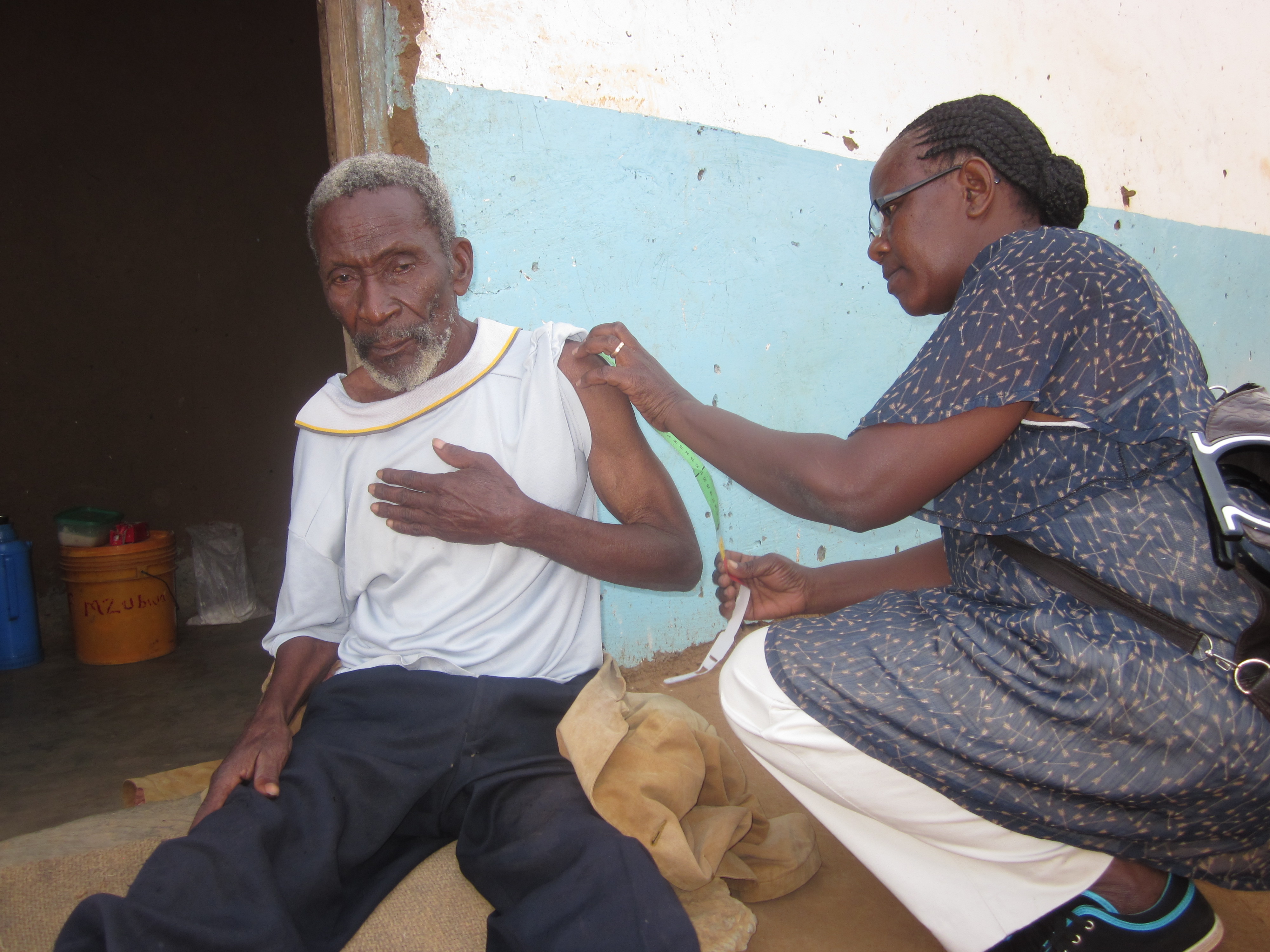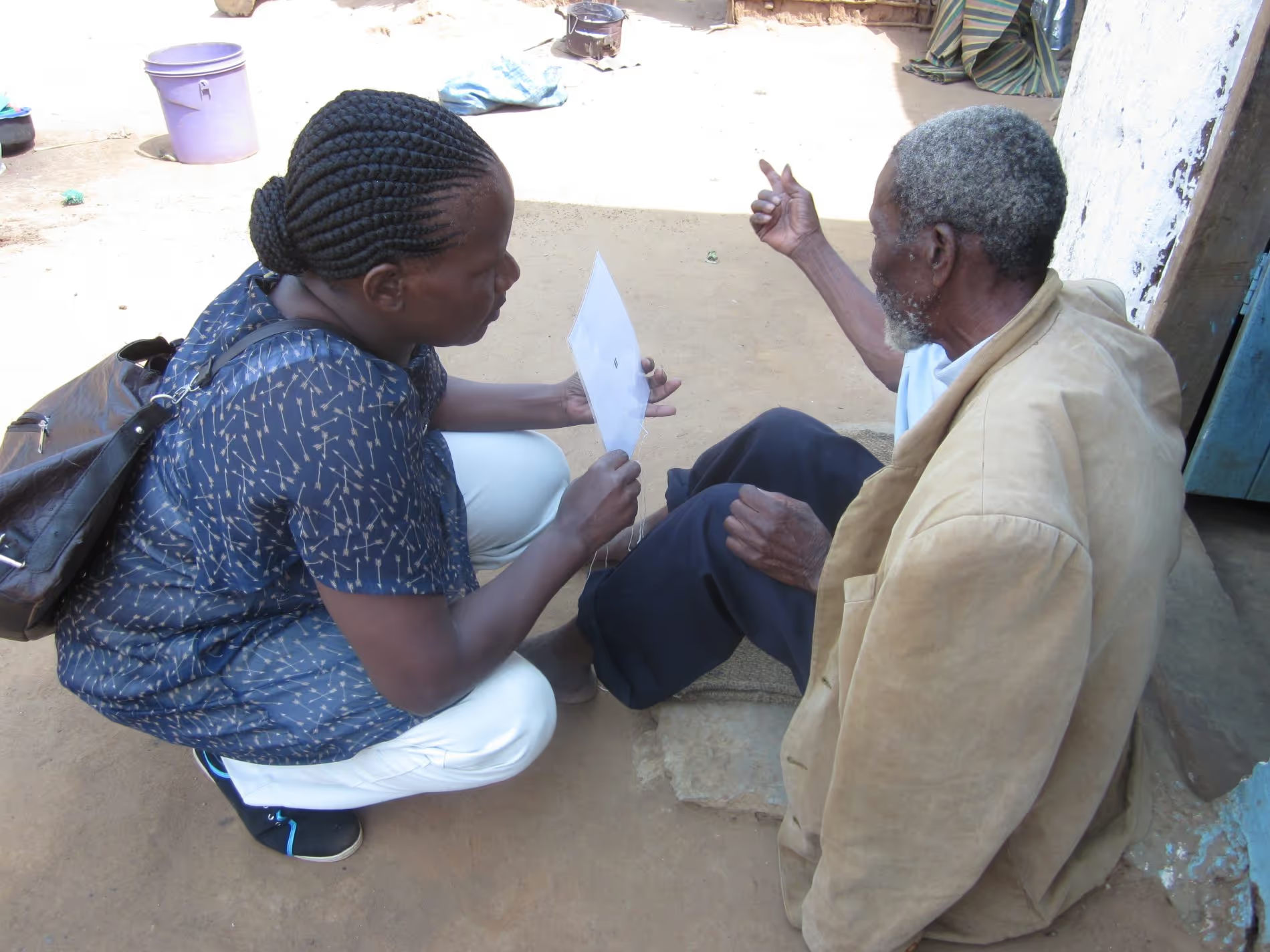RAM-OP: why you should use it!

HelpAge International’s Emergency Humanitarian Health and Nutrition Adviser, Pascale Fritch, gives her insights on their newly launched innovation: RAM-OP – a low-cost tool to test the health needs of older people in emergencies.
RAM-OP is a great tool – it’s a house-to-house survey that can be used to assess the nutrition status of older people as well as a range of vulnerability factors, some of them specific to old age. We at HelpAge International have great hopes that it will appeal to humanitarian actors, and also to people working in development. It is as effective as alternative assessments, but cheaper, quicker to implement and provides a wider range of indicators. We hope that RAM-OP will entice humanitarian actors to comprehensively assess the needs of older people, and to include them specifically as a target group in their operations.

The humanitarian need
I have worked for HelpAge for 5 years, and through my field experience, I am convinced that older people deserve more attention and more targeted services in humanitarian contexts. I am always shocked when I hear colleagues from other organisations claiming that “our mandate is about children and women”. Where are the humanitarian principles in this? How can anybody say that they are truly humanitarian if they systematically exclude a whole vulnerable group? How can it be justified to choose who is worth supporting and who is not? The answers usually involve a lack of resources, and the necessity to focus on “the most vulnerable”, lack of donors’ interest, lack of expertise, and a lack of evidence.

It is in order to propose some alternative to these last two constraints (lack of expertise and lack of evidence), that we -Brixton health, Valid International and HelpAge, with the support of the ELRHA’s Humanitarian Innovation Fund - have decided to create an assessment tool specially designed for older people, that would be rapid, easy to use, accessible to all, and of course, scientifically robust.
Building on the rapid assessment method already developed by Brixton Health and Valid, we have developed a survey covering the specific needs of older people: in nutrition, food security, physical and mental health, social status, water and sanitation… The survey covers all these aspects, through questions or tests that have already been tried in different contexts and languages. Sometimes we have adapted the questions to reflect the needs of the older people (for example, RAM-OP is able to analyse the content of the diet in vitamins and minerals that are important for older people).
RAM-OP’s USPs : rapid sampling; rapid analysis; easy to implement
It is rapid, because only a small sample of older people needs must be surveyed: less than 200 individuals, which is a great improvement compared with the usual methods requiring samples of more than 600 respondents. To start with, we sample 16 locations in the area where we want to carry out the survey, and in each of these 16 locations, a minimum of 12 older people will be interviewed and tested. With such a small sample, it is possible to complete the survey within four or five days, depending on the number of enumerators that are recruited.

The rapidity is also in the analysis: once the data are entered in the data entry file (provided with the user manual) it is easy to connect to the data analysis software, enter the data file, and the results immediately appear in a spreadsheet; we get the indicators, with their confidence interval, and they are even disaggregated by sex.
RAM-OP is easy to implement: we are providing the user manual, as well as all the necessary tools, such as the questionnaire (in French and in English), the data entry files (also in French and in English), and the instructions on how to access the data analysis software. We also provide an example of the training manual for the enumerators. All these documents and tools are accessible on line , and they all are in open source format: nobody needs to buy anything to access them (except an Internet access).
The manual is really easy to use. It describes the sampling method, explains the indicators and how they are calculated, and takes the user through the various phases of the survey, with practical insights, and a lot of visual aids.

The indicators generated by RAM-OP have a good precision: we have tested the method and compared it with the usual standard (SMART), and the tests have shown that we get similar precision with either method. The advantage of RAM-OP is that it is faster, cheaper, and specific to older people. We also get much more information than the usual prevalence of malnutrition. RAM-OP provides strong evidence on many aspects of older people’s vulnerability.
Though we have built it with humanitarian situations in mind, it can also be used in development contexts: all the indicators are relevant and provide useful information on older people’s needs. It does not need to be used only in emergency settings.
We hope many will use RAM-OP, and generate evidence of older people’s vulnerability and needs, so that they are not any more the forgotten ones.
For more information please visit the HelpAge website or contact Pascale Fritch
Stay updated
Sign up for our newsletter to receive regular updates on resources, news, and insights like this. Don’t miss out on important information that can help you stay informed and engaged.
Related articles



Explore Elrha
Learn more about our mission, the organisations we support, and the resources we provide to drive research and innovation in humanitarian response.